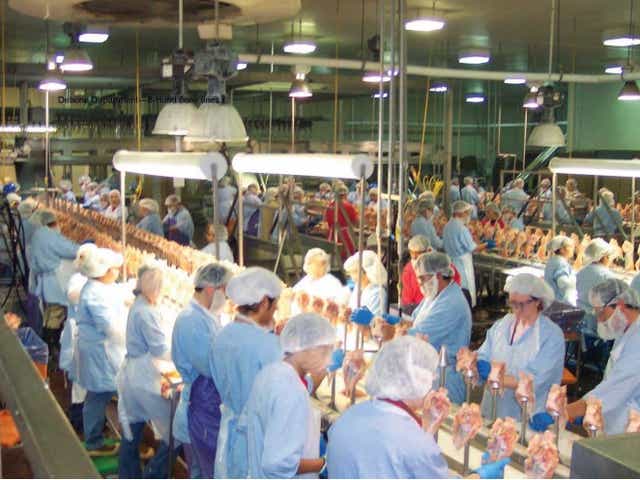
The United Food and Commercial Workers Union, the country’s largest meatpacking workers’ union, is condemning the reopening of 14 meatpacking plants under a recent executive order by the US Administration. The union is calling for CDC coronavirus safety guidelines to be made mandatory, as at least 30 meatpacking workers have died of COVID-19 and over 10,000 have been exposed to or infected by the coronavirus. The industry work practices under normal circumstances tend to put workers in close proximity to each other, working at high speed as they cut up animal carcasses.
The pandemic caused at least 30 meatpacking plants to temporarily close over the past two months, resulting in a 40% drop in pork production capacity and a 25% drop in beef production capacity, the union said. The U.S. Agriculture Department said 14 plants that had closed due to outbreaks of the virus were in the process of reopening this week. The 14 plants included a Smithfield Foods Inc pork facility in Sioux Falls, South Dakota, that started operating on May 7 and another in Waterloo, Iowa, that Tyson Foods said earlier in the week would resume limited operations. The agriculture department also said meat facilities operated by JBS USA [JBS.UL] in Minnesota and Wisconsin, and six other Tyson plants were reopening.
UFCW has previously said more protective equipment and testing would be required to open the plants. But as plants reopened without these measures in place, UFCW International President Marc Perrone criticized the decision. “Today’s rush by the Trump Administration to re-open 14 meatpacking plants without the urgent safety improvements needed is a reckless move that will put American lives at risk and further endanger the long-term security of our nation’s food supply. Since the executive order was announced, the Administration has failed to take the urgent action needed to enact clear and enforceable safety standards at these meatpacking plants.”
Health guidelines issued by CDC and OSHA to help reduce the spread of Covid-19 in slaughterhouses includes face coverings, health training in multiple languages, and more distancing between workers. Processing lines in meat plants typically run at high speeds, with employees eviscerating animals inches apart from each other. Slowing lines down and spreading workers out will undoubtedly increase the cost of producing meat, but Perry says it’s a small price to pay to protect their lives. CDC is also asking meat plants to do away with the contentious practice of offering “attendance bonuses,” in which companies offer hundreds of dollars of incentives to workers on the condition that they don’t miss their shifts.
The common criticism of OSHA and CDC’s Covid-19 guidance to meatpackers is that it’s entirely optional. This has resulted in an inconsistent patchwork of protections by plant and by state which leaves workers at risk for other outbreak. Unions are asking for standardized workplace protections against airborne diseases like Covid-19. Such requirements wouldn’t be without precedent. In 2010, following the H1N1 pandemic, OSHA began to draft mandatory guidelines to reduce the spread of viruses that spread through air and respiratory droplets. That rulemaking was finalized in 2017 but was halted during the change in US Administration.
Read more
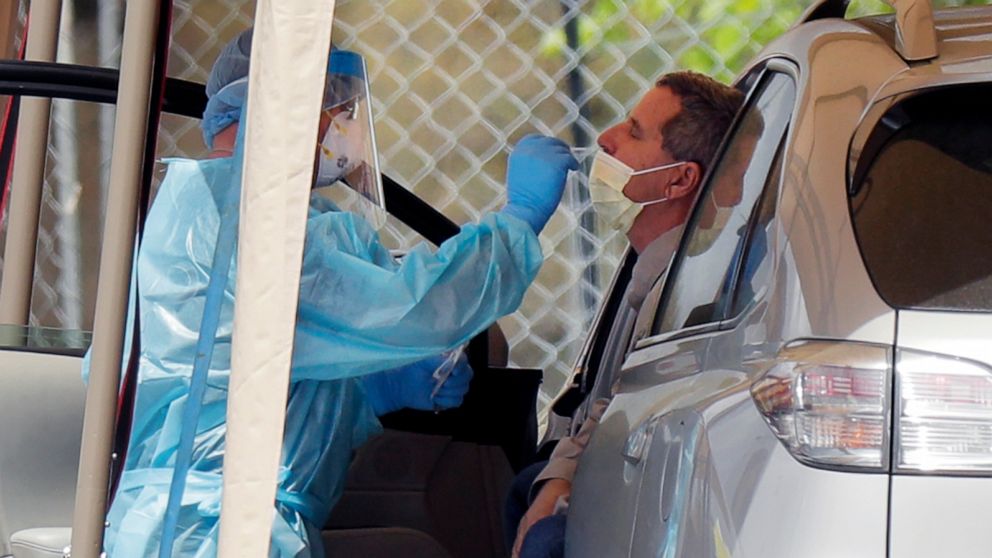
As many states slowly reopen, a pair of studies predict the COVID-19 outbreak is set to become far deadlier in the United States. A draft Federal Emergency Management Agency report forecasts that daily coronavirus deaths in the United States would rise to 3,000 people a day by June 1 — that’s a 70% increase over the current figure. Separately, the Institute for Health Metrics and Evaluation at the University of Washington estimates the U.S. death toll will reach around 135,000 by August in the United States.
The U.S. death toll from the coronavirus outbreak has topped 75,000 and is projected to keep rising in the coming weeks. The official coronavirus death toll worldwide has topped a quarter of a million, with over 3.6 million confirmed cases. The United States makes up close to one-third of confirmed cases and a quarter of known deaths, even though it represents less than 5% of the world’s population.
Over half of U.S. states have relaxed, or are preparing to loosen, social distancing and other restrictions but it has not been a smooth transition. In Georgia, more than 120 Atlanta restaurants have refused to open, saying it is not safe to do so despite Georgia Governor Brian Kemp’s lifting of the state’s shelter-in-place order. In Miami Beach, the governor had to close a popular park — just five days after reopening it — after thousands failed to adhere to new rules requiring social distancing and wearing a face mask.
Meanwhile, we continue to learn more about the virus globally as scientists and doctors try to create a vaccine. A French hospital says they treated a COVID-19 patient as early as December — a month before the government confirmed its first cases. A preliminary new study finds the novel coronavirus that first emerged in China mutated in Europe in February to become more contagious, speeding its spread around the globe. The authors of the study said they released their findings early so that people working on vaccines could see their results.
US Researchers say the novel coronavirus silently spread in the United States earlier than previously thought as well, infecting tens of thousands of people in New York and other major cities before the first US case was confirmed on January 21. A new model by the Network Science Institute at Northeastern University in Boston shows the first infections came from China in early or mid-January, and that the virus went undetected because many people were not presenting symptoms or were misdiagnosed because US doctors had not seen the virus first hand yet.
The model suggests that while Americans were still focused on China, about 28,000 people in major cities — such as New York, San Francisco and Seattle — were infected by March 1. Santa Clara County officials announced that tissue samples confirmed two people who died in early February tested positive for coronavirus. That month, a number of physicians saw patients, without travel histories, who had flu-like symptoms.
Several states, including California and Indiana, have been retracing their coronavirus timelines after discovering that the highly infectious disease started killing people earlier than previously known. These discoveries have emphasized just how much about this pandemic remains unknown. Four months since the novel coronavirus was first discovered in Wuhan, China, experts worldwide still do not fully understand how the virus started, how it impacts the body or what treatments are effective.
Read more
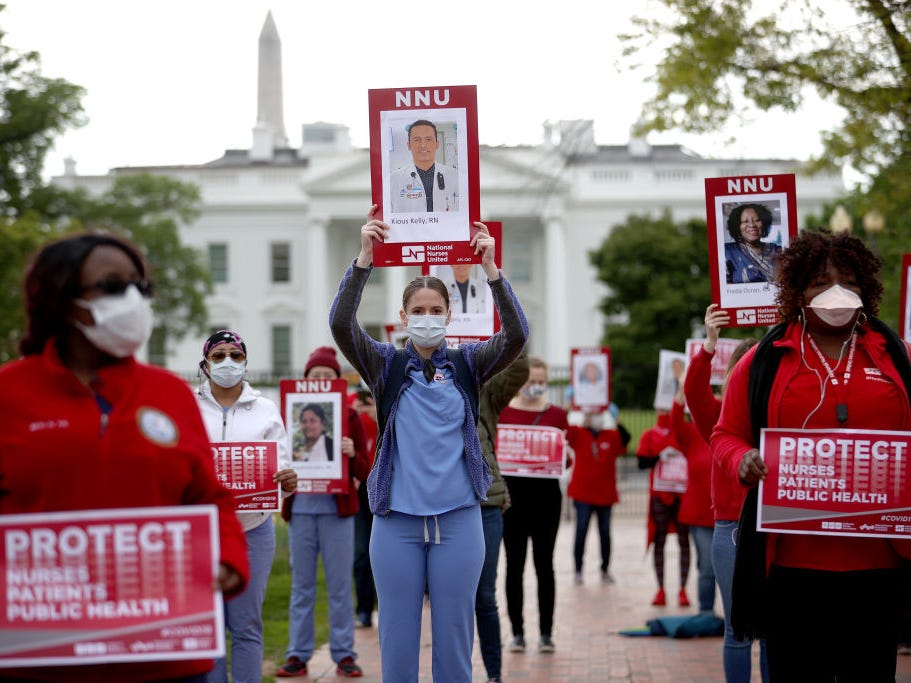
Dozens of nurses held a protest and vigil outside the White House reading the names of 50 healthcare workers who have died after becoming infected by the coronavirus on the job. The protest was organized by National Nurses United, which is demanding the Occupational Safety and Health Administration require adequate personal protective equipment for healthcare workers.
The Centers for Disease Control and Prevention reported 9,200 healthcare workers have tested positive for COVID-19, though the CDC admits the true rate is likely much higher. CDC data shows that 73% of the health workers falling ill are female and their median age is 42. US officials also say they have no comprehensive way to count those who lose their lives trying to save others. A limited CDC infection tally said 27 healthcare worker have died but stressed that the count was drawn from just 16% of the nation’s Covid-19 cases, so the true numbers of healthcare infections and deaths are certainly far higher.
Some states, including Ohio, have reported rates of healthcare worker illness as high as 20% but have not revealed data at the county, city or hospital levels. One health system, Henry Ford in the Detroit area, reported that more than 700 employees tested positive for Covid-19. Yet they have declined to say how many workers died, as in Ohio, to protect patient privacy. Media reports have shown case after case of healthcare workers across the US saying they do not have adequate protective gear to keep from getting sick.
The New York State Nurses Association filed a lawsuit the New York Department of Health and two hospitals Monday for their failure to provide adequate safety measures at the start of the coronavirus crisis. The lawsuits alleges the failures of Gov. Andrew Cuomo’s administration and the two hospitals for not providing sufficient protective equipment, like masks and gowns. NYSNA executive director Pat Kane said that more than 70% of her nurses reported being exposed to the dangerous disease and that most are still untested.
Media outlets revealed last month that at one of the hospitals named in the suit, a shortage of gowns was so dire that nurses battling the coronavirus pandemic at Mount’s Sinai’s Midtown West hospital resorted to wearing trash bags over their uniforms for protection. One of there coworkers, a beloved assistant nursing manager, Kious Kelly, died from the coronavirus. At the time of her death, Mount Sinai insisted there was no shortage of PPE.
Read more
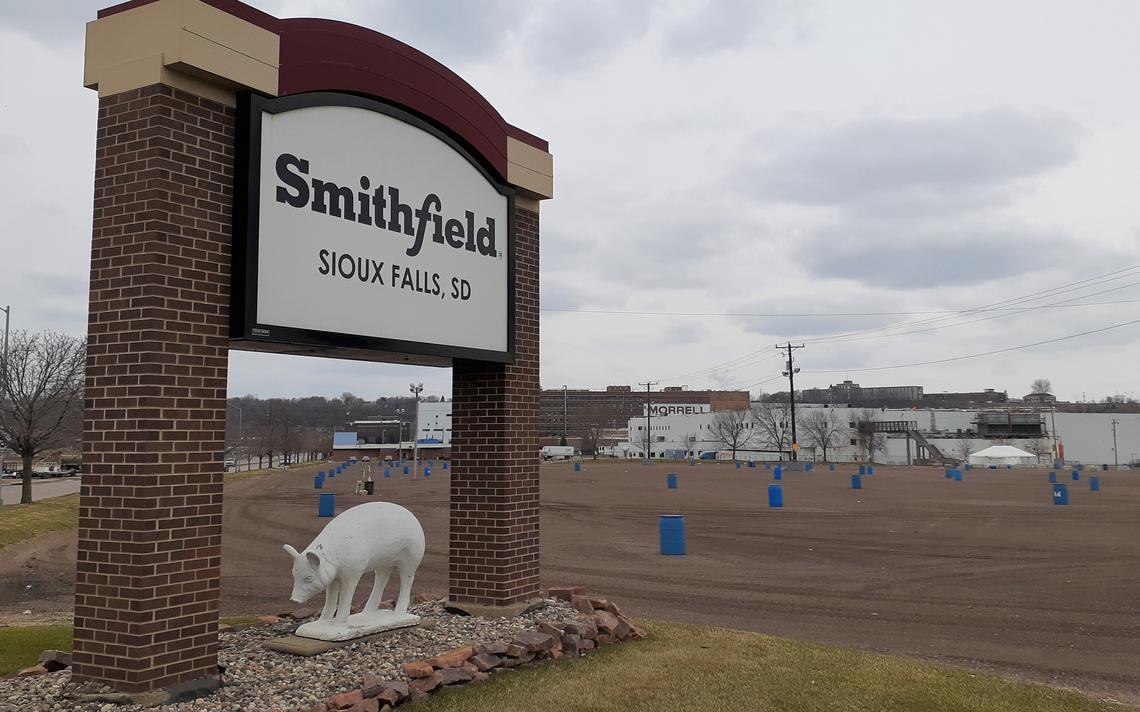
The coronavirus outbreak has hit workers in the food processing industry hard, with meatpacking plants reporting explosions in coronavirus cases. In Sioux Falls, South Dakota, a Smithfield Foods pork processing plant that employs 3, 700 people closed down indefinitely after the mayor put pressure on the CEOs to shut down for two weeks as the virus continued to spread through the plant.
The mayor spent two weeks asking them to shut down to no avail with daily reports of more workers becoming infected. He finally forced their hand by releasing a letter, signed by the governor, requesting that the plant shut down and released it to the press. At the time of the closure, the plant had 238 workers that tested positive. Now, just 3 weeks after their first worker tested positive, there are more than 700 workers who are confirmed to have Covid 19 and another 143 infections that were traced to them. The number of confirmed cases from the Smithfield plant represent 55% of the states’ cases.
Cargill Meat Solutions, a 900-worker plant in Hazleton, Pa., that packages meat in plastic for supermarket shelves in Pennsylvania and surrounding states, shut down temporarily as 130 hourly workers have tested positive for COVID-19 and a rash of employees called out sick. Three other Pennsylvania plants closed due to the virus. According to a union rep, JBS Beef in Souderton, CTI Foods hamburger-grinding plant in King of Prussia and Empire Kosher Poultry Inc. in Mifflintown are all closed amid outbreaks among employees. A 70-year-old union steward at the JBS Beef slaughterhouse in Souderton died on April 3 from respiratory failure brought on by the pandemic virus.
Meat-processing plants across several other states including Colorado, Iowa, and Nebraska are reporting COVID-19 outbreaks. A federal food inspector in New York died from the disease last month. Some companies are temporarily closing to sanitize facilities while also boosting hourly pay and offering bonuses to workers in an “essential” industry. Cargill said it would reopen its Hazleton plant as soon as it is safe. In late March, Cargill and the United Food and Commercial Workers negotiated a $2 per hour raise for shifts worked between March 23 and May 3. JBS Beef employees will be eligible for a one-time $500 bonus on May 15.
The World Health Organization, the U.S. Food and Drug Administration, and the Centers for Disease Control and Prevention say COVID-19 cannot be spread through food. It’s an “unstable virus” that is mostly spread through sneezing and person-to-person contact. Stomach acids also mostly neutralize the virus if it’s eaten as well.
Read more

France extended its coronavirus lockdown another four weeks until May 11. President Emmanuel Macron announced the extension in a televised address. France has reported over 140,000 cases and over 17,000 coronavirus deaths. From May 11 onward, he said, quarantine will be “gradually” lifted, starting with nurseries, K-12 schools, and some shops.
Macron’s address was his third since March 17, when the government ordered 67 million French people to stay home, allowing them out just once a day to exercise, buy food or medicine, or seek medical care. In the sobering televised address, Macron was apologetic, admitting he thought they were ready for the crisis but they clearly were not. He acknowledged state failures in rolling out testing and supporting healthcare workers, and admitted that he didn’t have all the answers. Macron said they have faced up to that and have had to make very difficult decisions that required them to adapt constantly as fragmentary information continued to change. “This moment, let’s be honest, has revealed cracks, shortages. Like every country in the world, we have lacked gloves, hand gel, we haven’t been able to give out as many masks as we wanted to our health professionals.”
France has seen progress with slowing the spread but Macron urged that that is no reason to lift the order. “I fully understand the effort I’m asking from you,” Macron told the nation, adding that the current rules were working. “When will we be able to return to a normal life? I would love to be able to answer you. But to be frank, I have to humbly tell you we don’t have definitive answers,” he said.
“Over the next four weeks, the rules must be respected,” he explained. Macron said the four-week extension will give France the ability to test anyone presenting COVID-19 symptoms, which will allow for better containment of the virus. He said that by May 11, France would be able to test every citizen presenting COVID-19 symptoms which is why the orders have to be extended.
He offered a rough timeline for how the country may reopen, starting with schools and shops in May and ending with restaurants, hotels, cafés and cinemas in July. International arrivals from non-European countries will remain prohibited until further notice. “We’ll end up winning,” Macron said. “But we’ll need to live with the virus for a few months.”
After a steady increase in cases until the first week of April, the number of patients in French hospitals’ intensive care units has started to decline, prompting health authorities to call a plateau in the epidemic. French hospitals are just about coping, while nursing homes are still overwhelmed. Some of that pressure has been eased by a massive effort to transfer patients by plane, helicopter or even high-speed train from hospitals in the east and Paris to the west.
Read more

Dr. Anthony Fauci, speaking on CNN’s “State of the Union”, offered his prognosis as the federal government weighs rolling back guidelines on social distancing in areas that have not been as hard-hit by the outbreak at the conclusion of the nationwide 15-day effort to slow the spread of the virus. The U.S. government’s foremost infection disease expert says the United States could experience more than 100,000 deaths and millions of infections from the coronavirus pandemic.
The US has become the epicenter with about 125,000 cases of COVID-19 in the U.S. and over 2,100 dead as of March 29, 2020. Most people who contract COVID-19 have mild or moderate symptoms, which can include fever and cough but also milder cases of pneumonia, sometimes requiring hospitalization. The risk of death is greater for older adults and people with other health problems. Hospitals in the most afflicted areas are straining to handle patients and some are short of critical supplies.
The US president has suggested that a target date for reopening the U.S economy, which has been battered by the coronavirus outbreak, is April 12, Easter. But public health officials warn that lifting restrictions too soon could lead to more deaths and further damage the economy. To limit the spread of the coronavirus, the Centers for Disease Control and Prevention has issued social distancing guidelines and called for gatherings of more than 10 people to be canceled, while governors have ordered residents in their states to remain in their homes and ordered nonessential businesses to close.
The CDC has issued a domestic travel advisory for New York, New Jersey and Connecticut. “Due to extensive community transmission of COVID -19 in the area, CDC urges residents of New York, New Jersey, and Connecticut to refrain from non-essential domestic travel for 14 days effective immediately,” the CDC said in a statement. “This Domestic Travel Advisory does not apply to employees of critical infrastructure industries, including but not limited to trucking, public health professionals, financial services, and food supply.” The CDC also noted that the governors of the three states would “have full discretion to implement this Domestic Travel Advisory.”
With more than 124,000 cases and 2,046 deaths nationwide, the three states make up more than half of the cases and nearly half of the deaths. New York State has over 55,000 confirmed cases and over 2,000 deaths. New Jersey has over 11,000 confirmed cases and 140 deaths. Connecticut has over 1,200 confirmed cases and 33 deaths. Most of the Connecticut cases are in Fairfield County where many residents commute into New York City for work.
Read more

A Manhattan judge sentenced former Hollywood producer and convicted sex offender Harvey Weinstein to 23 years in prison. His 20-year sentence for a criminal sexual act, the more serious of the two counts he was convicted of last month, is on the higher end of New York state’s guidelines. For the other count, rape in the third degree, Weinstein was sentenced to three years in prison.
After his sentencing, Weinstein was taken under armed guard and bussed from the Manhattan courthouse to the Rikers Island jail. He was later transferred to Manhattan’s Bellevue Hospital after complaining of chest pains.
Weinstein was found guilty last month of raping then-aspiring actress Jessica Mann in a hotel room in 2013 and of sexually assaulting production assistant Mimi Haley at his apartment in 2006. Meanwhile, prosecutors in Los Angeles are working to extradite Weinstein to face further charges of rape and sexual assault in California.
In a rambling statement during his sentencing hearing, Weinstein expressed remorse, defended his relationships with the women who testified against him, said he was “confused,” bragged about the charity money he raised after 9/11 and Superstorm Sandy, lamented that his children won’t speak to him and fretted about the future of the American legal system.
His statement was unexpected and, perhaps, unwise. In general, defendants like Weinstein, who plans to appeal his guilty verdict and faces other rape and sexual assault charges in Los Angeles, are advised not to speak because what they say can be used against them, according to Michelle Simpson Tuegel, an attorney who has worked in criminal defense.
Manhattan District Attorney Cyrus Vance Jr. said in a statement “We thank the survivors for their remarkable statements today and indescribable courage over the last two years. Harvey Weinstein deployed nothing less than an army of spies to keep them silent,” he added. “But they refused to be silent, and they were heard. Their words took down a predator and put him behind bars and gave hope to survivors of sexual violence all across the world.”
Read more
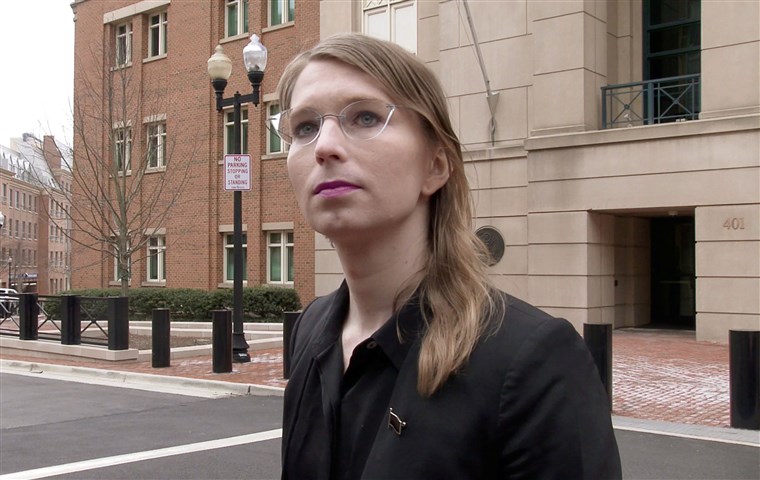
A US judge ordered Army whistleblower Chelsea Manning released from jail after one year behind bars on contempt charges for refusing to cooperate in a federal grand jury investigation into WikiLeaks. The order for her immediate release came one day after Manning was hospitalized in Virginia after she reportedly attempted suicide at a federal prison in Alexandria.
Judge Anthony J. Trenga wrote, “The court finds Ms. Manning’s appearance before the grand jury is no longer needed, in light of which her detention no longer serves any coercive purpose.” Judge Trenga, however, rejected a request to cancel the fines imposed against Manning for refusing to testify. Manning will now have to pay $256,000.
Manning and her legal team showed that her imprisonment was nothing but punitive, and thus unjustifiable under the legal statutes governing federal grand juries. Yet for nearly a year, Manning has been caged and fined $1,000 per day. Ever since she was subpoenaed to testify before the grand jury, which is investigating WikiLeaks, Manning has also insisted that there was never any justifiable purpose to asking her to testify.
In 2013, Manning was sentenced to 35 years in prison for leaking documents and video to WikiLeaks showing evidence of U.S. war crimes in Iraq and Afghanistan. President Obama granted her clemency in 2017. WikiLeaks founder Julian Assange has been charged in federal court in Alexandria, Virginia for violating the Espionage Act, and is accused of helping Manning try to access the Department of Defense computers. Assange is fighting extradition from London.
Read more
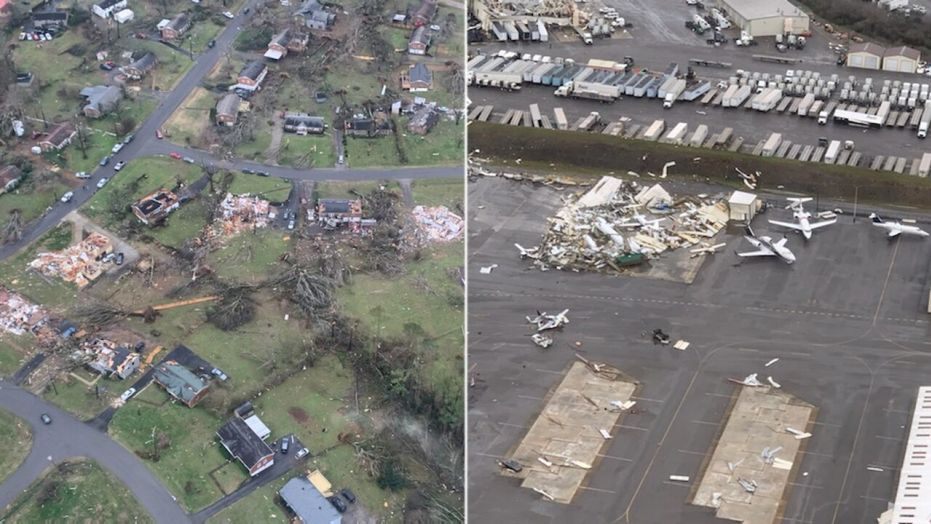
Powerful tornadoes ripped through Tennessee, killing at least 24 people and injuring at least 85 more in the Nashville area. Emergency crews in Putnam County, Tennessee, where 18 of the deaths occurred-combed through shattered homes and collapsed buildings, searching for victims more than 36 hours after at least two tornadoes touched down in the middle part of the state. A state of emergency was declared in Tennessee as a result of the damage.
Damage was sustained in at least four counties in the path of the storms. Officials said that one long-track tornado produced damage that peaked at EF3 strength along a 50-mile-long corridor from Nashville east to near Gordonsville. Among the victims in Putnam County are children aged 2 to 13 years old, and several of the deceased are related to each other. Four families lost multiple people. Besides the victims in Putnam County, a total of four people were killed in Wilson County, two in Davidson County, which is home to Nashville, and one in Benton County.
More than 73,000 homes and businesses were without power in four counties, the state emergency agency said. Nashville Electric said that four substations and 15 primary distribution lines were damaged. Overturned tractor-trailers blocked stretches of Interstate 24 near Antioch and Interstate 40 near Mt. Juliet after the storm. Dozens of buildings collapsed as the winds reached at least 155 mph — EF-3 tornado level — in Mount Juliet and Donelson.
The damage stretched far beyond Nashville and across several counties. Tornadoes were reported several times along a 145-mile stretch, including in the small city of Camden just after 11 p.m. CT; in Nashville after midnight; and in the Cookeville area in Putnam County shortly before 2 a.m., the National Weather Service said. The tornado touched down near Highway 70 near Baxter and traveled to just before Willow Avenue in Cookeville, Porter said. The hardest hit areas include Charleton Square, Plunk Whitson, Echo Valley, Prosperity Point, North Mcbroom Chapel, and Double Springs Utility District.
Read more

A Bronx woman is charged with murder and robbery in an attack on another woman at an ATM in the Bronx that lead to the victim’s death 10 days later. Police say 21-year-old Reign Harvey and at least one other person turned themselves in Thursday after authorities released images of three women involved in the attack. Police are still searching for the third woman involved.
So far, Harvey is the only person being charged in the murder of 43-year-old Tamara Sinclair, who was found dead inside her apartment on February 21. On February 11, police say Sinclair was attacked by three women as she tried to use the ATM at the Bank of America near the corner of Pelham Parkway and White Plains Road.
Sinclair was in a TD Bank vestibule on White Plains Road near Pelham Parkway South on when Harney banged on the glass door, demanding Sinclair let her in. The women claimed to have lost a debit card inside but Sinclair said to the woman, ‘I don’t know you” and refused to let them in.
Rattled, she left and crossed the street to a Bank of America to use that ATM instead. The women followed her to the second bank and they argued before Harney threw Sinclair to the ground and punched her repeatedly in the face. One of the women still at large, snatched Sinclair’s cell phone, pushed her to the ground and kicked her when she tried to fight back, prosecutors said. Another of the assailants took Sinclair’s wallet, gave it to Harney to rifle through and kicked the victim down the bank vestibule steps.
When police arrived, they found Sinclair on the ground and complaining of pain to her leg, but she declined medical attention. On February 17, Sinclair went into the NYPD’s 47th Precinct to report the assault to detectives. On February 20, she went to Montefiore Medical Center complaining of head and chest pains. Doctors believed she had a fractured ankle, but she left the hospital without further testing.
According to her sister, a doctor had warned Sinclair that she had blood clots from the beating that could kill her, but she feared a big hospital bill so she went home. The next day, she was found dead in her apartment after she did end up developing a blood clot from the fractured ankle. The medical examiner will determine the cause of death.
Read more












